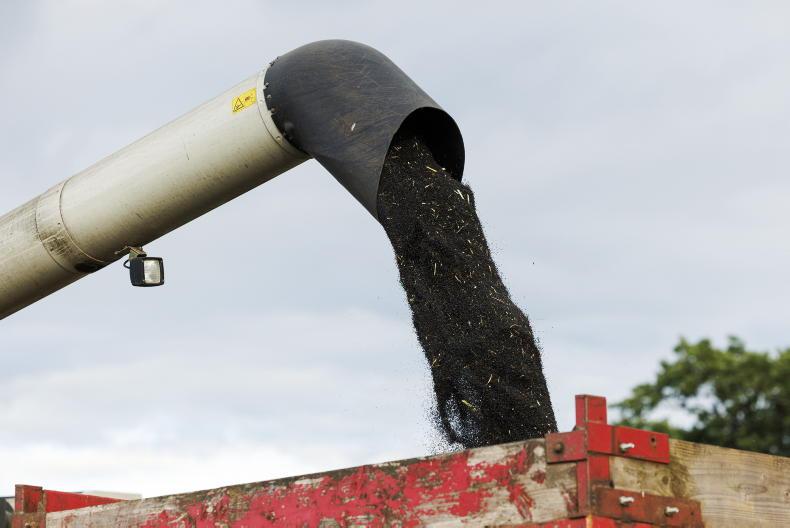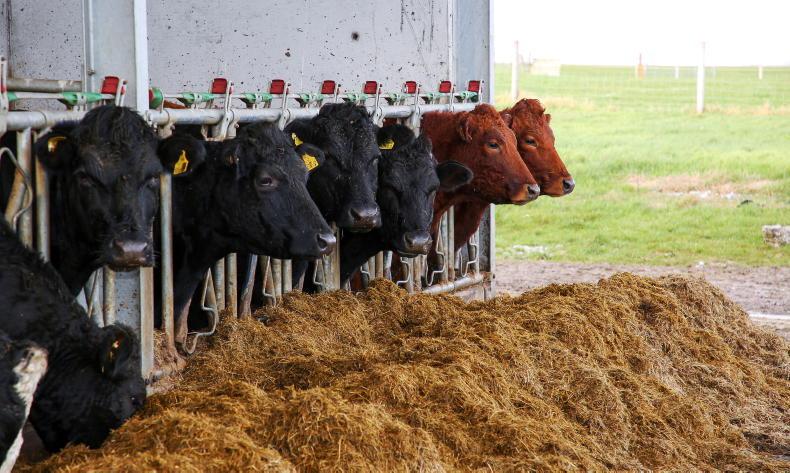Fertiliser prices: Fertiliser prices and availability remain a real concern for 2022.
Prices of as high as €900/t are being quoted for urea and €700/t for CAN.
There isn’t scope within beef systems to pay this type of money for fertiliser so if prices remain high, the aim will be to try to minimise the amount of fertiliser that is used on beef farms in 2022.
It may also mean reducing stocking rates in line with the amount of grass you can grow in 2022.
The problem with this is that if everybody thinks the same way we will likely see a depressed store trade in 2022.
For farmers with store cattle this winter, it could be an option to finish out of the shed before turnout next spring.
Current indications would suggest that beef price will stay relatively stable well into 2022 and further price increases are likely for April and May in 2022 so aiming animals for finishing around then as opposed to storing them over winter could be an option.
While the amount of meal being fed to these animals will be expensive, it could cut down on the amount of silage that will have to be made in 2022. Buying hay or silage at the moment and stretching out your own silage supplies could also be an option on some farms.
Slurry will become very important in 2022 so have a plan about managing it appropriately. It’s not just a matter of getting rid of it and it should be used to help grow silage crops.
Watery slurry could also be used to spread in spring on grazing ground or even after grazing if using a trailing shoe. A thousand gallons of cattle slurry per acre at 4% dry matter spread via a trailing shoe is the equivalent of one bag of 6:3:21/acre so it should be used wisely.
Pig slurry could also be an option in some areas. A thousand gallons of pig slurry/acre at 4.3% dry matter is the equivalent of spreading one bag of 19:7:20/acre.
Lime is one of the cheapest forms of fertiliser there is and having the correct pH is vital for fertiliser to work to its maximum efficiency. Spreading lime will also help to release nitrogen from the soil and make it available for grass growth.
Winter health: We got some excellent questions into our Winter Health Webinar last Thursday night. You can watch back at www.farmersjournal.ie/webinar.
There were a lot of questions around resistance and the threat of resistance to some dosing products emerging on farms. Products containing triclabendazole are most at risk.
Offaly vet Donal Lynch said annual rotation of dosing products, plus post-treatment assessment of effectiveness of dosing should form part of fluke control programmes. This will aid you in deciding what product to use. Following up on livers in factories is also an important tool in assessing product effectiveness and dosing requirements. Consult with your vet as to the best strategy for your farm.
Donal also stressed the importance of staggering some tasks like dosing for worms, lice and fluke along with vaccinating and castrating on the same day.
Fertiliser prices: Fertiliser prices and availability remain a real concern for 2022.
Prices of as high as €900/t are being quoted for urea and €700/t for CAN.
There isn’t scope within beef systems to pay this type of money for fertiliser so if prices remain high, the aim will be to try to minimise the amount of fertiliser that is used on beef farms in 2022.
It may also mean reducing stocking rates in line with the amount of grass you can grow in 2022.
The problem with this is that if everybody thinks the same way we will likely see a depressed store trade in 2022.
For farmers with store cattle this winter, it could be an option to finish out of the shed before turnout next spring.
Current indications would suggest that beef price will stay relatively stable well into 2022 and further price increases are likely for April and May in 2022 so aiming animals for finishing around then as opposed to storing them over winter could be an option.
While the amount of meal being fed to these animals will be expensive, it could cut down on the amount of silage that will have to be made in 2022. Buying hay or silage at the moment and stretching out your own silage supplies could also be an option on some farms.
Slurry will become very important in 2022 so have a plan about managing it appropriately. It’s not just a matter of getting rid of it and it should be used to help grow silage crops.
Watery slurry could also be used to spread in spring on grazing ground or even after grazing if using a trailing shoe. A thousand gallons of cattle slurry per acre at 4% dry matter spread via a trailing shoe is the equivalent of one bag of 6:3:21/acre so it should be used wisely.
Pig slurry could also be an option in some areas. A thousand gallons of pig slurry/acre at 4.3% dry matter is the equivalent of spreading one bag of 19:7:20/acre.
Lime is one of the cheapest forms of fertiliser there is and having the correct pH is vital for fertiliser to work to its maximum efficiency. Spreading lime will also help to release nitrogen from the soil and make it available for grass growth.
Winter health: We got some excellent questions into our Winter Health Webinar last Thursday night. You can watch back at www.farmersjournal.ie/webinar.
There were a lot of questions around resistance and the threat of resistance to some dosing products emerging on farms. Products containing triclabendazole are most at risk.
Offaly vet Donal Lynch said annual rotation of dosing products, plus post-treatment assessment of effectiveness of dosing should form part of fluke control programmes. This will aid you in deciding what product to use. Following up on livers in factories is also an important tool in assessing product effectiveness and dosing requirements. Consult with your vet as to the best strategy for your farm.
Donal also stressed the importance of staggering some tasks like dosing for worms, lice and fluke along with vaccinating and castrating on the same day.










SHARING OPTIONS